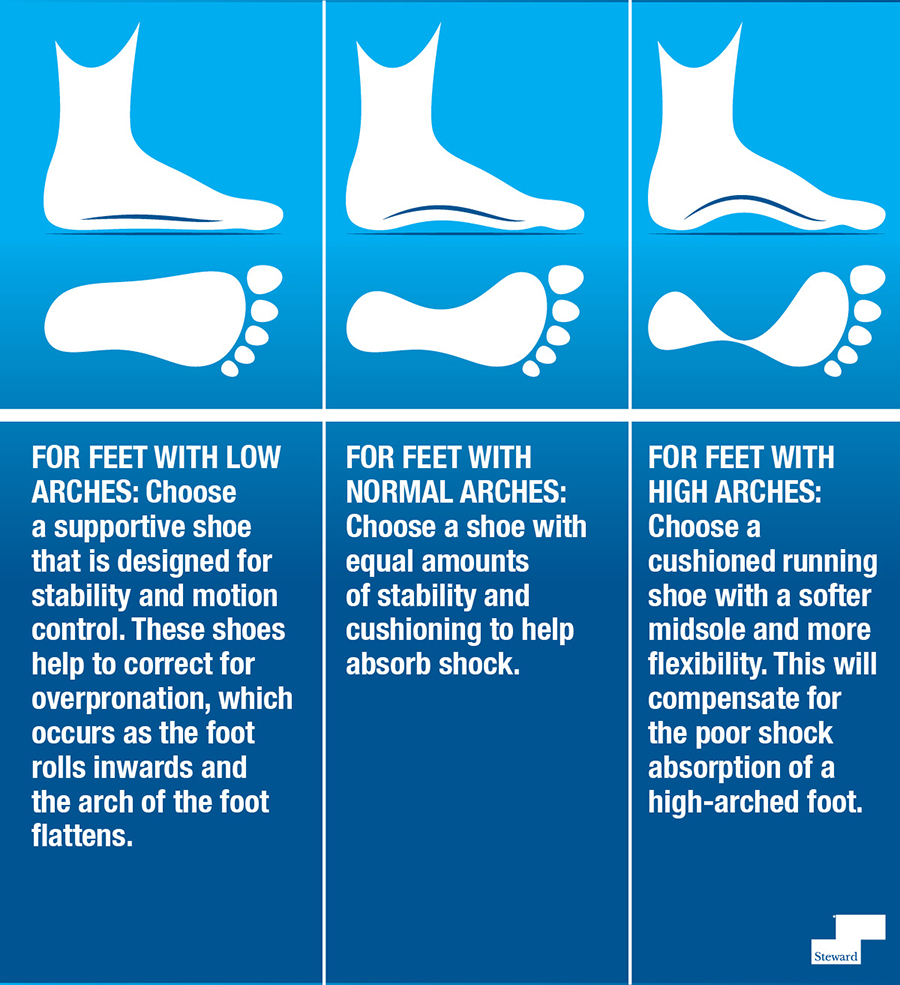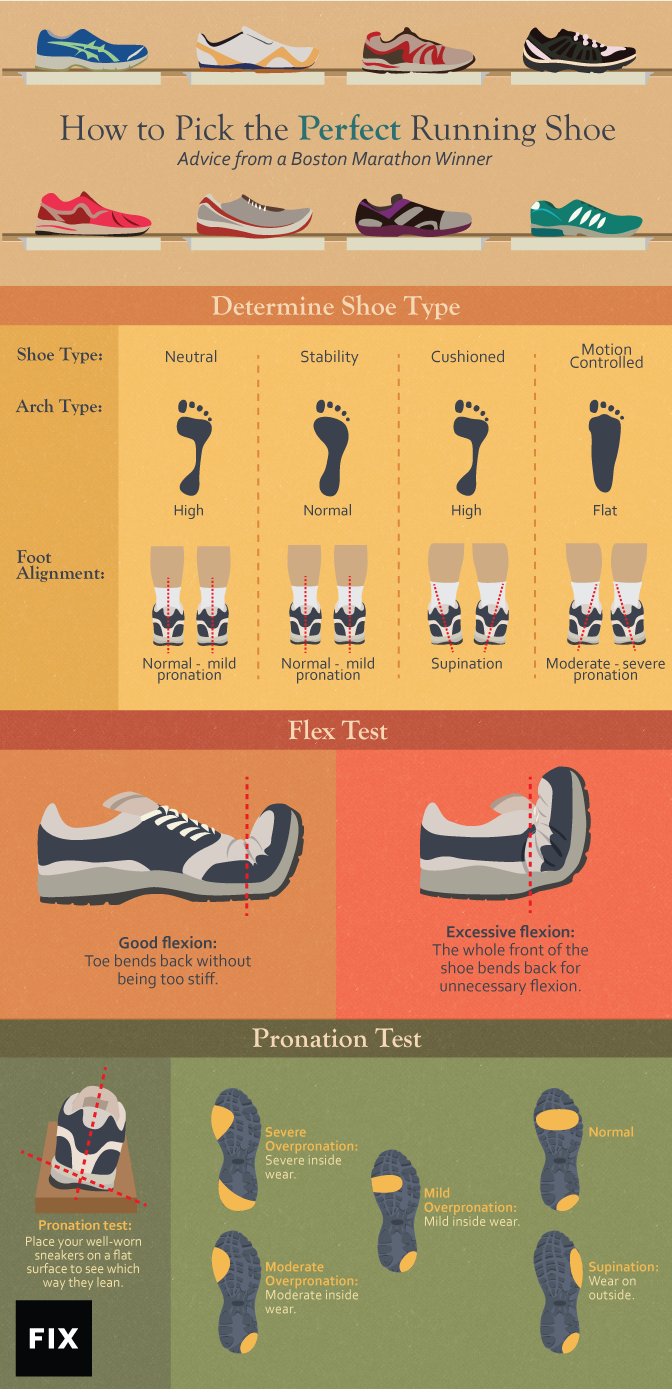Finding the right running shoes is crucial for comfort and performance. The wrong pair can lead to injuries and discomfort.
Choosing running shoes can be overwhelming due to the many options available. Your feet, running style, and preferences all play a role in the decision. The right shoes help prevent injuries and enhance your running experience. This guide will help you understand the important factors to consider.
We will cover foot type, running surface, and shoe fit. By the end, you’ll know how to pick the perfect running shoes for your needs. Let’s dive into the key elements of selecting the ideal pair.
Importance Of Proper Running Shoes
Choosing the right running shoes is crucial for every runner. Proper running shoes provide the necessary support and comfort. They help runners avoid common injuries and improve performance. Investing in the right pair can make a significant difference in your running experience.
Preventing Injuries
Proper running shoes help prevent injuries. They offer good cushioning to absorb shock. This reduces the impact on your joints and muscles. Well-fitted shoes also provide stability. This helps avoid ankle sprains and other foot injuries. Runners with the right shoes often experience fewer injuries. They can train consistently without setbacks.
Enhancing Performance
Good running shoes enhance your performance. They provide better traction on different surfaces. This makes it easier to run faster and maintain a steady pace. Lightweight shoes reduce fatigue. This allows you to run longer distances without feeling tired. Proper running shoes also improve your running form. With the right shoes, you can achieve your personal best.

Credit: www.opportunityfitness.com.au
Understanding Your Foot Type
Understanding your foot type is crucial for choosing the right running shoes. Different foot types require specific shoe support for comfort and performance. Properly fitting shoes help prevent injuries and enhance your running experience.
Understanding your foot type is crucial in choosing the right running shoes. Knowing your arch type and pronation pattern helps you find shoes that offer the best support and comfort. This guide will help you understand your foot type better.Arch Types
Your arch type can be high, medium, or flat. Identifying your arch type helps in selecting shoes with the right support. To find out your arch type, try the wet test. Wet your foot and step on a piece of paper. The imprint will show your arch type. A high arch leaves a narrow footprint. This type needs shoes with extra cushioning. Medium arches show a distinct curve along the inside. Neutral shoes with good support work best here. Flat arches leave a full footprint. Stability shoes are ideal for this type.Pronation Patterns
Pronation is how your foot rolls inward as you run. Knowing your pronation pattern helps in choosing shoes that prevent injuries. There are three main pronation patterns: neutral, overpronation, and underpronation. Neutral pronation means your foot rolls inward slightly. Most running shoes work well for neutral pronation. Overpronation is when your foot rolls inward too much. Stability shoes help correct this. Underpronation, or supination, is when your foot rolls outward. Cushioned shoes are best for this pattern. Understanding your foot type, arch type, and pronation pattern is essential. It ensures you pick the right running shoes for a comfortable and injury-free run.Types Of Running Shoes
Choosing the right running shoes is crucial for a comfortable and injury-free run. Knowing the different types of running shoes helps you make the best choice for your feet and running style. Below, we will discuss the main categories of running shoes.
Neutral Shoes
Neutral shoes are designed for runners with a normal gait. They offer a balance of cushion and support, making them versatile for various running styles. These shoes are ideal for runners without significant pronation issues.
| Features | Description |
|---|---|
| Cushioning | Moderate to high |
| Arch support | Minimal |
| Weight | Light to moderate |
Stability Shoes
Stability shoes are meant for runners who experience mild to moderate overpronation. These shoes provide extra support and cushioning to help correct the inward roll of the foot during the stride. They are a good middle-ground option.
- Extra support: Helps in controlling pronation.
- Firm midsole: Offers better arch support.
- Heavier weight: Due to additional support structures.
Motion Control Shoes
Motion control shoes are designed for runners with severe overpronation. They offer the highest level of support and are built to be very sturdy. These shoes help in significantly limiting the motion of the foot, ensuring a stable run.
- Maximum support: Ideal for severe overpronators.
- Firmest midsole: Provides excellent stability.
- Heaviest weight: Due to robust construction.
How To Determine The Right Fit
Choosing the right running shoes is crucial for comfort and performance. The right fit can prevent injuries and enhance your running experience. So, how do you determine the right fit for your running shoes? Let’s break it down into simple steps.
Measuring Your Feet
Begin by measuring your feet. Feet can change in size over time. Measure your feet at the end of the day. This is when they are the largest. Use a ruler or a foot measuring device. Measure both the length and width of your feet. Note down the measurements.
Trying Shoes On
Next, try shoes on. Wear the same socks you plan to run in. Check that there is a thumb’s width of space at the toe. This allows for swelling during runs. Walk around in the shoes. Ensure they feel comfortable. There should be no tight spots or slipping.
Pay attention to the heel fit. Your heel should not slip out. The midfoot should feel snug but not tight. The shoe should bend at the ball of your foot. This indicates good flexibility.
Finally, consider the arch support. Shoes should support your foot’s natural arch. Test this by standing on one foot. The shoe should feel stable and supportive.
Essential Features To Look For
Choosing the right running shoes is crucial for comfort and performance. There are several key features to consider to ensure you get the best fit for your needs. Here are the essential features to look for when selecting running shoes.
Cushioning
Cushioning is critical for absorbing impact. It helps reduce stress on your joints. Look for shoes with good midsole cushioning. This feature provides comfort during long runs. Different brands offer various types of cushioning. Choose one that feels right for your foot.
Support
Support is vital to maintain proper foot alignment. It helps prevent injuries. Stability shoes offer extra support for overpronation. Neutral shoes are better for those with a normal gait. Ensure the shoe supports your arch type. This will enhance your running experience.
Durability
Durability ensures your shoes last through many runs. Check the outsole material. Rubber outsoles are more durable. Look for reinforced areas in high-wear spots. Quality stitching also indicates long-lasting shoes. Durable shoes provide better value over time.

Credit: www.rei.com
Considering Your Running Style
Choosing the right running shoes is crucial. Your running style plays a big role in this decision. Different surfaces demand different types of shoes. Let’s explore the best options for various running styles.
Road Running
Road running involves running on paved surfaces like sidewalks and streets. For this style, you need shoes with ample cushioning. This helps absorb the impact on hard surfaces.
Look for shoes that are lightweight. This feature can enhance your speed and comfort. Also, ensure they have a durable outsole. This provides better grip and longevity.
| Feature | Benefit |
|---|---|
| Cushioning | Absorbs shock and prevents injuries |
| Lightweight | Improves speed and reduces fatigue |
| Durable Outsole | Provides better grip and lasts longer |
Trail Running
Trail running is all about off-road paths. These include forests, mountains, and uneven terrains. Shoes for trail running need specific features.
First, they should have a strong grip. This prevents slips on muddy or rocky surfaces. Second, they require enhanced protection. This guards your feet from rocks and debris.
Lastly, they should offer good stability. Uneven terrain demands shoes that keep your balance intact.
- Strong Grip: Prevents slips and falls
- Enhanced Protection: Guards feet from debris
- Good Stability: Maintains balance on uneven paths
Track Running
Track running usually happens on synthetic tracks. Speed and performance are key here. Shoes for track running should be lightweight and snug.
A snug fit helps reduce foot movement within the shoe. This minimizes the risk of blisters. Also, look for shoes with minimal cushioning. This provides better ground feel and speed.
- Lightweight: Enhances speed
- Snug Fit: Reduces foot movement and prevents blisters
- Minimal Cushioning: Offers better ground feel
When To Replace Your Running Shoes
Understanding when to replace your running shoes can help you avoid injury and maintain performance. Over time, even the best shoes wear out and lose their effectiveness. This section will guide you through identifying the right time for a new pair.
Signs Of Wear And Tear
Look for visible signs of wear and tear on your running shoes. Here are some common signs:
- Sole wear: Check the outsoles. Uneven wear can affect stability.
- Midsole compression: Press on the midsole. If it feels too soft or doesn’t rebound, it’s time to replace.
- Heel breakdown: Inspect the heel area. Cracks or excessive wear indicate replacement.
- Upper damage: Tears or holes in the upper fabric can compromise support.
Mileage Guidelines
Running shoes have a lifespan, typically measured in miles. Here’s a general guide:
| Type of Runner | Mileage Before Replacement |
|---|---|
| Casual Runner | 300-400 miles |
| Regular Runner | 250-300 miles |
| Competitive Runner | 200-250 miles |
Track your mileage to know when to replace your shoes.
Regularly check for these signs and follow mileage guidelines. This ensures your running shoes provide the support and cushioning needed to keep you running safely and comfortably.
Expert Tips For Buying Running Shoes
Choosing the right running shoes can make a big difference. It can affect comfort, performance, and injury prevention. Below are expert tips to guide you in finding the perfect pair of running shoes.
Shopping Tips
Shopping for running shoes requires some important considerations. Here are a few tips to keep in mind:
- Know Your Foot Type: High arches, flat feet, or neutral arches need different support.
- Visit a Specialty Store: Experts can help you find the right shoes.
- Try Shoes on Later in the Day: Feet swell during the day and during exercise.
- Bring Your Running Socks: Wear the socks you usually run in for a proper fit.
- Test Them Out: Walk or jog around the store to feel the fit and comfort.
Common Mistakes To Avoid
Avoid these mistakes to ensure you get the best running shoes:
- Choosing Style Over Comfort: Looks are less important than how they feel on your feet.
- Ignoring Your Gait: Your running style affects what type of shoe you need.
- Buying Too Small: Your toes need space. Opt for a thumb’s width of room at the end.
- Not Replacing Old Shoes: Shoes lose cushioning and support over time. Replace them every 300-500 miles.
- Skipping the Break-In Period: Wear new shoes for short runs first to prevent blisters and discomfort.
By following these tips and avoiding common mistakes, you can find the perfect running shoes for your needs. Happy running!

Credit: www.stewardtoday.com
Frequently Asked Questions
What Are The Best Running Shoes For Beginners?
Beginner runners should look for shoes with good cushioning and arch support. Comfort is key.
How Often Should You Replace Running Shoes?
Replace running shoes every 300-500 miles. Worn-out shoes can cause injuries.
What Are The Key Features To Look For In Running Shoes?
Look for proper fit, good cushioning, and arch support. Consider your running style and foot type.
Conclusion
Choosing the right running shoes is essential for comfort and performance. Consider your foot type and running style. Visit a specialty store for expert advice. Try on several pairs and take your time. Remember, the best fit supports your feet without pinching or slipping.
Prioritize comfort over style. Investing in good running shoes can prevent injuries and enhance your running experience. Happy running!



Leave a Reply